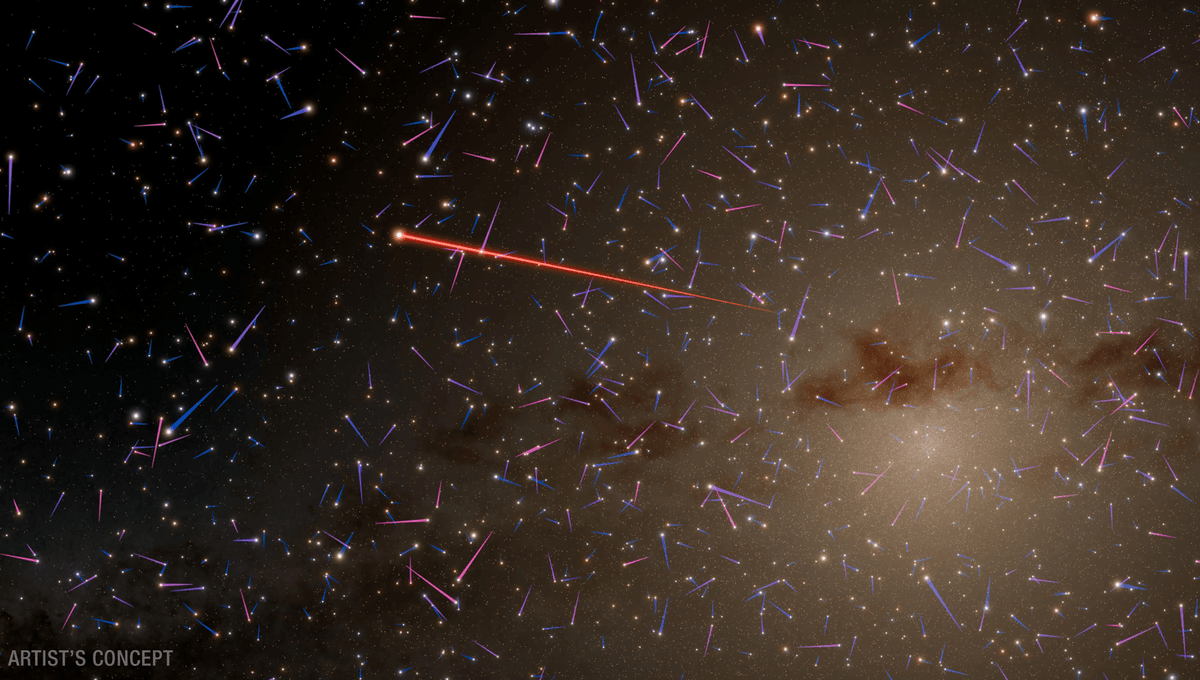
Around the galaxy exist stars that have been given a push, and orbit much faster than the vast majority of their stellar companions. These are known as hypervelocity stars, with some moving faster than the escape velocity of the Milky Way of around 600 kilometers (373 miles) per second. There is another star that is almost as speedy, but it doesn’t have to worry about that record because it might have broken another. It looks like it has a planet, making this the fastest star system known.
ADVERTISEMENT GO AD FREE
The system was spotted in archival data from MOA (Microlensing Observations in Astrophysics) which revealed the likely presence of this small star, one-fifth of our Sun, and a large planet, 29 times the mass of Earth.
“We think this is a so-called super-Neptune world orbiting a low-mass star at a distance that would lie between the orbits of Venus and Earth if it were in our Solar System,” lead author Dr Sean Terry, from the University of Maryland and NASA’s Goddard Space Flight Center, said in a statement. “If so, it will be the first planet ever found orbiting a hypervelocity star.”
The original observations were from 2011, and were possible because this pair of objects passed in front of a more distant star, slightly magnifying it like a glass lens. This is the microlensing effect – a very cool way to discover exoplanets but with a drawback. They couldn’t measure their exact masses, only their ratio, because the distance of the pair is not known. One is about 2,300 times heavier than the other.
“Determining the mass ratio is easy,” said Dr David Bennett, a senior research scientist at the University of Maryland, College Park and NASA Goddard, who co-authored the new paper and led the original study in 2011. “It’s much more difficult to calculate their actual masses.”
The team looked for an object that might match the stellar description. They found it in data from the European Space Agency’s Gaia satellite dated to 2021. The candidate is this star and super-Neptune pair located 24,000 light-years away, within the Milky Way’s galactic bulge.
The system could be as small as a Jupiter-sized planet with a moon the size of ours, although that would be invisible to Gaia. Follow-up data from Gaia, which ceased operations a few weeks ago, will be needed to confirm this is the case. The motion of the star was only measured in 2D on the projected sky, so the more recent observations will allow for more accurate measurements.
ADVERTISEMENT GO AD FREE
“To be certain the newly identified star is part of the system that caused the 2011 signal, we’d like to look again in another year and see if it moves the right amount and in the right direction to confirm it came from the point where we detected the signal,” Bennett said.
“If high-resolution observations show that the star just stays in the same position, then we can tell for sure that it is not part of the system that caused the signal,” said Aparna Bhattacharya, a research scientist at the University of Maryland, College Park and NASA Goddard who co-authored the new paper. “That would mean the rogue planet and exomoon model is favored.”
It might be that the star system is actually faster than 600 kilometers per second (1.3 million miles per hour). This would be the first known star system that eventually will leave the Milky Way.
The study is published in The Astronomical Journal.
Source Link: Scrawny Star With Large Planet Breaks Galactic Speed Record At 1.9 Million Kilometers Per Hour